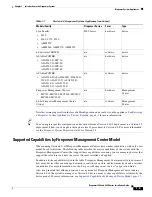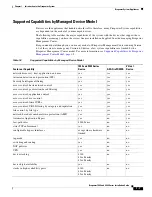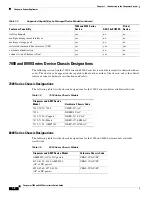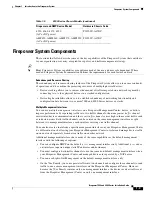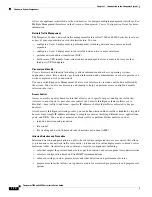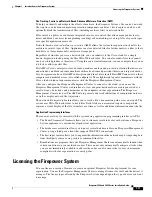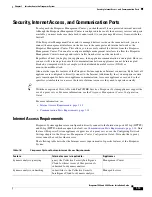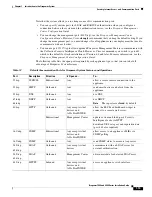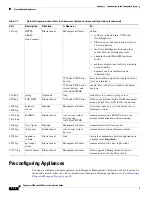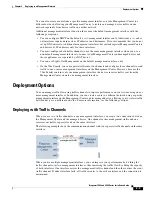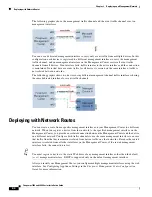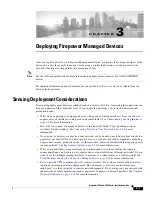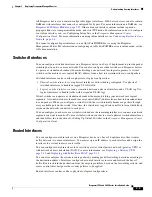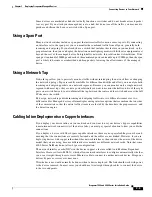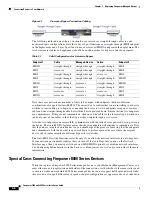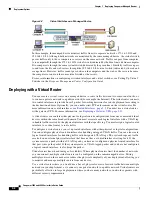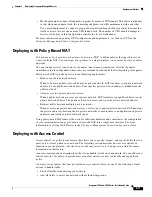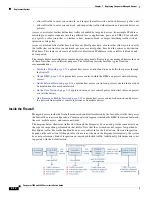
2-3
Firepower 7000 and 8000 Series Installation Guide
Chapter 2 Deploying on a Management Network
Deployment Options
You can also create a route from a specific management interface on your Management Center to a
different network, allowing your Management Center to isolate and manage device traffic on one
network separately from device traffic on another network.
Additional management interfaces function the same as the default management interface with the
following exceptions:
•
You can configure DHCP on the default (
eth0
) management interface only. Additional (
eth1
and so
on) interfaces require unique static IP addresses and hostnames. Cisco recommends that you do not
set up DNS entries for additional management interfaces but instead register Management Centers
and devices by IP addresses only for these interfaces.
•
You must configure both traffic channels to use the same management interface when you use a
non-default management interface to connect your Management Center and managed device and
those appliances are separated by a NAT device.
•
You can use Lights-Out Management on the default management interface only.
•
On the 70xx Family, you can separate traffic into two channels and configure those channels to send
traffic to one or more management interfaces on the Management Center. However, because the
70xx Family contains only one management interface, the device receives traffic sent from the
Management Center on only one management interface.
Deployment Options
You can manage traffic flow using traffic channels to improve performance on your system using one or
more management interfaces. In addition, you can create a route to a different network using a specific
management interface on the Management Center and its managed device, allowing you to isolate traffic
between devices on different networks. For more information, see the following sections:
Deploying with Traffic Channels
When you use two traffic channels on one management interface, you create two connections between
the Management Center and the managed device. One channel carries management traffic and one
carries event traffic, separately and on the same interface.
The following example shows the communication channel with two separate traffic channels on the same
interface.
When you use multiple management interfaces, you can improve your performance by dividing the
traffic channels over two management interfaces, thus increasing the traffic flow by adding the capacity
of both interfaces. One interface carries the management traffic channel and the other carries the event
traffic channel. If either interface fails, all traffic reroutes to the active interface and the connection is
maintained.

